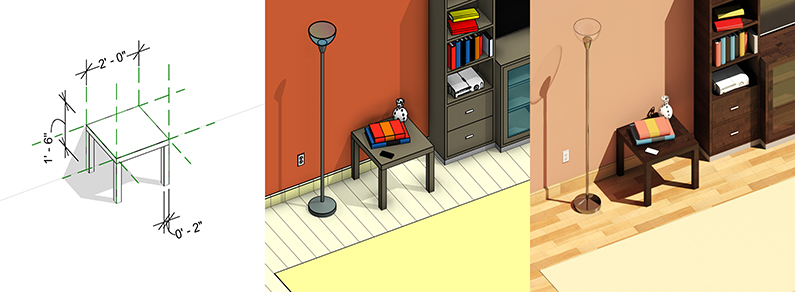

Select the RECTANGLE button and pick two points to create a rectangular shape for our simple box extrusion. For this exercise we’ll be using the simple extrusion form.Īfter clicking EXTRUSION, you will then be placed into sketch mode. Notice there are 5 different types of forms you can create: Extrusion, Blend, Revolve, Sweep and Swept Blend. On the CREATE ribbon, find the FORMS panel and click EXTRUSION. With the reference planes dimensioned and constrained, it’s time to create a simple extrusion. Repeat the process for the horizontal reference planes. Then create a second dimension string this time selecting only the left and right reference planes. Click EQ to make the reference planes equidistant. Select the left reference plane, then the middle and finally the right reference plan. Next we’ll need to add dimensions to constrain the reference planes and then add shared parameters to control the reference planes so from the ANNOTATE ribbon, on the DIMENSION panel click ALIGNED. Step 3 – Adding dimensions, constraints and shared parameters We’ll fix that in the next step using dimensions to constrain the reference planes.


Now draw four reference planes in a clock-wise manner. To create reference planes, from the CREATE ribbon, on the DATUM panel click REFERNECE PLANE (or type RP). Reference planes are 2-dimensional guidelines used to control the 3D geometry of the family. Note the file extension: RFT is a Revit family template. Start by creating a new family using the GENERIC MODEL.RFT file. In this first entry, we’ll run through the steps to create a simple parametric box using reference planes, dimensions and constraints, shared parameters to control the length, width and depth of the box and we’ll wrap up by creating a type catalog for our new family.


 0 kommentar(er)
0 kommentar(er)
